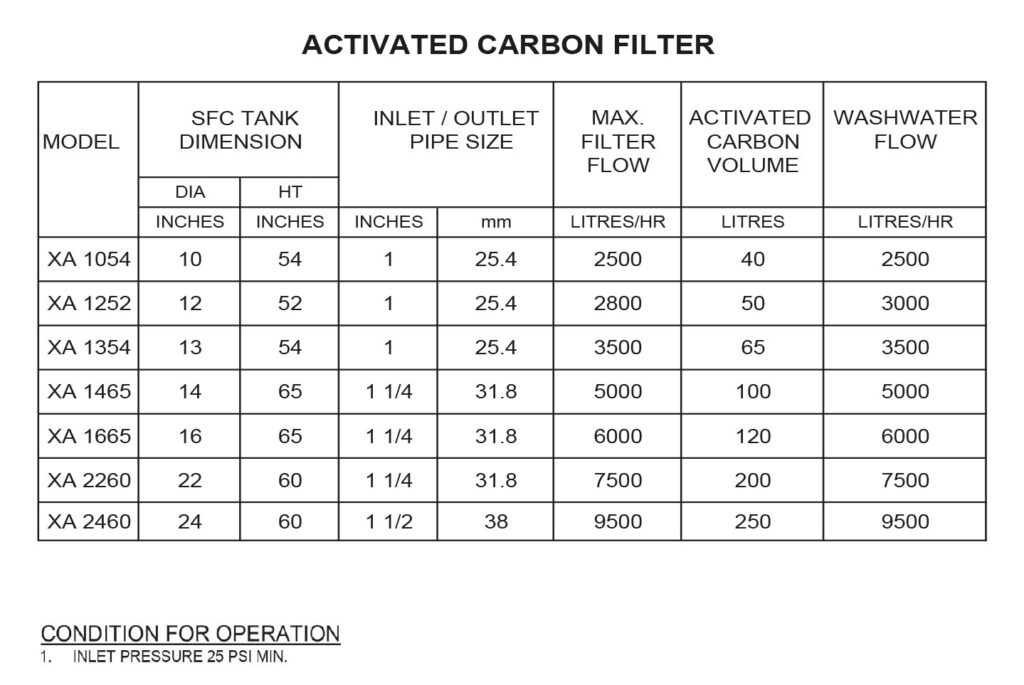Automatic Carbon Filter
Autotrol 263 Series Control Valve
FEATURES AND BENEFITS
- Time-tested Duraflow flapper provides frictionless sealing for
longer service life - Fiber-reinforced polymer valve body for superior strength and
durability, non-corrosive, and UV-resistant - Optical sensor for precision cycle positioning
- Automatic Carbon Filter fully adjustable 5 or 8 cycle control for efficient and reliable water treatment system
- Continuous service flow rate of 25 GPM with a backwash of 20
GPM - Backwash capability accommodates filter tanks up to 10″ and
filter up to 24″ in diameter - Super capacitor for keeping time of day during power outage
- Environmental protective cover for water resistance, corrosion
resistance, and UV stability - Programming stored in memory and will not be lost due to power outages
- History data for valve performance.

DECHLORINATION WITH GRANULAR ACTIVATED CARBON
DESCRIPTION
Granular activated carbon is specially produced with a capability of adsorbing organics from water and for dechlorination of drinking water. The process of dechlorination is dependent upon the concentration of chlorine, flow rate and carbon bed dept.
Activated carbon perform a dual function, filtration and adsorbing dissolved organic chemicals such as insecticides, detergents, phenols and other contaminants from both natural and industrial sources which cause taste, odour and colour problems.
The bulk of activated carbon produced today is made from either coconut shells, coal, wood or peat materials, activated by selective oxidation with steam at elevated temperatures between 800-1000°C.
The final product is available in many shapes and sizes and, if viewed under a microscope, would resemble a porous sponge. A cross sectional view looks like a maze of interconnecting channels of pores, large at the surface, terminating in smaller pores in the interior.
Activated carbons can be used to upgrade water quality using existing rapid sand filtration equipment. Used as a complete replacement for sand or coal, they function as a dual purpose medium: providing both filtration and adsorbent. As a partial replacement for filters media, they can be used as an adsorbent to complement normal filtration processes.
Very large water treatment plants, or plants confronted with exceptionally high contaminant loading, may wish to investigate the economic feasibility of carbon reactivation. In most municipal and industrial water supply treatment applications, however, operating experience indicates that life of the original carbon bed ranges from 3 to 5 years for taste and odour control and reactivation is not currently employed.
ADVANTAGES
• Less handling – once the activated carbon is placed in the filter bed, it requires no further handling until replacement
• Reserve capacity of activated carbon eliminates need for operating adjustments as raw water quality fluctuates
• Improves water quality, taste, odour and appearance
• Reserve capacity provides safety margin against undetected organic pollutants and accidental spills of toxic organic materials


